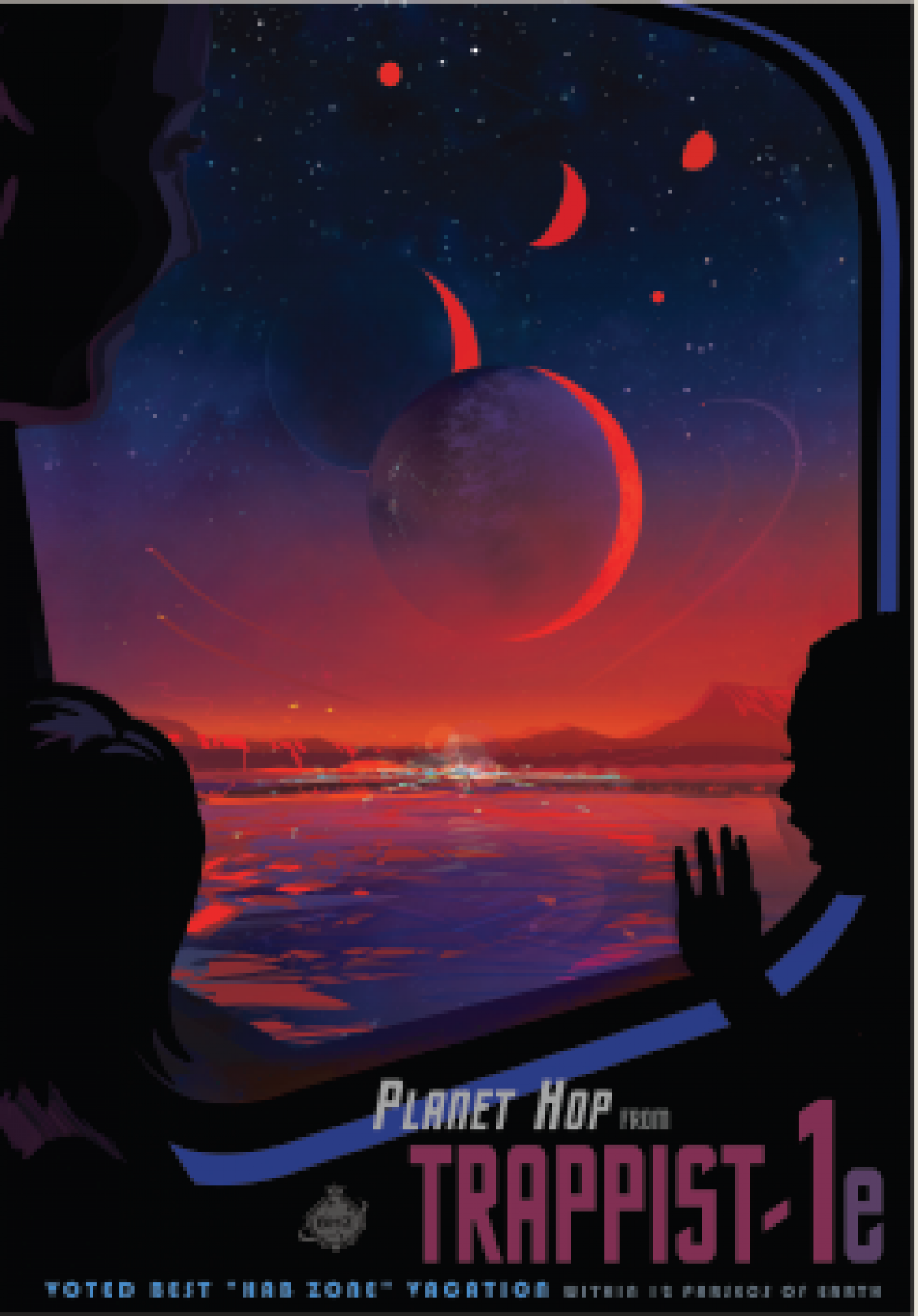
Updated | In February, NASA announced the discovery of seven potentially habitable planets within the TRAPPIST-1 solar system, just 40 light years from Earth. Three of the seven, scientists believe, are excellent targets in the search for alien life.
Scientists have now discovered that if life does exist it could be passed between the planets via space debris, raising the possibility that TRAPPIST-1 is a solar system with several planets inhabited by similar lifeforms.
In a study published in Astrophysical Journal Letters, Sebastiaan Krijt and colleagues from the University of Chicago have looked at the possibility of material transfer between the TRAPPIST-1 planets, for example if one of them was hit by a comet or asteroid.
That impact would cause large chucks of rock and other material to be ejected into space as pieces of debris and, after floating around for a while, gravitational forces of a nearby planet could eventually take hold and bring it crashing down to the surface.
If the ejected material was large enough and the proceeding journey short enough, any bacteria or single-celled organisms attached to it could survive long enough to reach a new planet.
"Frequent material exchange between adjacent planets in the tightly packed TRAPPIST-1 system appears likely," Krijt said in a statement. "If any of those materials contained life, it's possible they could inoculate another planet with life."
Unlike our solar system, all of the planets in TRAPPIST-1 are close to one another, meaning that material would not have to travel far.



Calculations show that around 10 percent of the material ejected would reach another potentially habitable planet within 100 years.
"Transport between planets f and g stands out as being particularly fast and effective, with some material being transferred within 10 years of being released," the team wrote.
Fred Ciesla, co-author of the paper, said in a statement: "Given that tightly packed planetary systems are being detected more frequently, this research will make us rethink what we expect to find in terms of habitable planets and the transfer of life—not only in the TRAPPIST-1 system, but elsewhere.
"We should be thinking in terms of systems of planets as a whole, and how they interact, rather than in terms of individual planets."
In an email interview with Newsweek, Krijt says if organic material was passed between planets, similar lifeforms could emerge: "If life only arose on one planet and subsequently spread to others, then that would indeed be the case. In such a scenario, there are some interesting parallels with ecological models that describe systems of islands on the Earth. One complication here however, is that while we have shown that material transfer can be fast, we cannot (yet) make any statements about the frequency of material exchange, as this is controlled by the unknown properties of the population of impactors present in the system."
He said whether or not life transported through space would take hold is difficult to tell: "I imagine this would depend on what the conditions on the surface of the 'new' planet are, and on how different they are from the conditions on the planet of origin. New climate models run specifically for the Trappist-1 system show that, for certain assumptions about their chemical composition and make up, perhaps only 1 of the planets has a habitable surface, which would make successful panspermia [life being passed around space via asteroids and comets] difficult. Then again, we find living organisms in very extreme locations on Earth, indicating life can be very resilient."
While scientists are hopeful that at least some of the planets in the TRAPPIST-1 system have conditions right for life, at present their masses—and their densities—are not clear. Scientists still do not know if the planets are a solid mass and whether they have an atmosphere that could sustain life.
But should the TRAPPIST-1 planets continue to show promise as potentially habitable exoplanets, they will likely be targets for NASA's James Webb Telescope, which is due to launch in 2018 and is designed to identify the atmospheres—and signs of alien life—on distant worlds.
Sean Carey, manager of NASA's Spitzer Science Center at Caltech, California, said at the time: "[We will] further refine our understanding of these planets so that the James Webb Space Telescope can follow up. More observations of the system are sure to reveal more secrets."
This story has been updated to include additional comments from Sebastiaan Krijt.
Uncommon Knowledge
Newsweek is committed to challenging conventional wisdom and finding connections in the search for common ground.
Newsweek is committed to challenging conventional wisdom and finding connections in the search for common ground.
About the writer
Hannah Osborne is Nesweek's Science Editor, based in London, UK. Hannah joined Newsweek in 2017 from IBTimes UK. She is ... Read more
To read how Newsweek uses AI as a newsroom tool, Click here.








